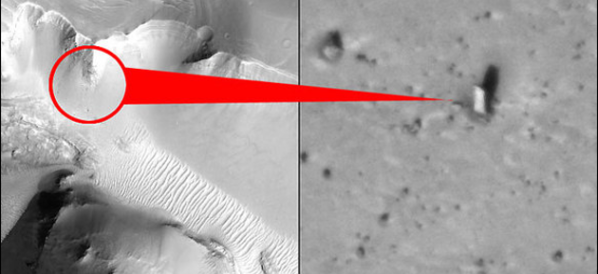 9 Terms
9 TermsHome > Terms > English, UK (UE) > Volcano rabbit
Volcano rabbit
A small rabbit that resides in the mountains of Mexico. It is the world's second smallest rabbit, second only to the pygmy rabbit. It has small rounded ears, short legs, and short, thick fur and weighs approximately 390–600 g(0.86 - 1.3 lb). It has a life span of approx.7 to 9 years. The volcano rabbit lives in groups of 2 to 5 animals in burrows (underground nests) and runways among grass tussocks. The burrows can be as long as 5m (16') and as deep as 40 cm (1.3'). There are usually 2 to 3 young per litter, born in the borrows.
Unlike many species of rabbits (and similar to pikas), the volcano rabbit utters very high-pitched sounds instead of thumping its feet on the ground to warn other rabbits of danger. It is nocturnal and is highly active during twilight, dawn and all times in between. As of 1969, there were 1000 to 1200 in the wild.
Volcano rabbits are found in Mexico. The rabbit occurs within 16 patches of its range. The rabbit has been pushed into various regions on the slopes of the Iztaccíhuatl, Pelado, Popocatepetl, and Tlaloc volcanoes. The volcano rabbit is generally found between elevations of 2800 m and 4250 m in pine forests with dense undergrowth of bunch grass and rocky terrain called the transverse neovolcanic axis. The climate is generally temperate, sub humid, and mild to cold. The average rainfall is usually 1000 mm. It has been proven that the distribution of species is heavily influenced by human activities and environmental factors. Volcano rabbits show strong preferences for habitat types that are categorised as subalpine bunch grasslands and pine forests. However, further research is necessary to determine what other variables directly affect the distribution of volcano rabbits. Oftentimes population density is used to measure habitat quality but it has been very controversial. In order to judge the quality of the habitat other factors such as competition, predation, productivity, survival, and reproductive success (fitness) need to be taken into consideration. In analysing the distribution range of the volcano rabbits and their habitats six different grassland types have been recognized. These different grasslands must be taken must be taken into consideration when analysing the habitat of the volcano rabbits. Habitat types for the volcano rabbit are generally categorised into three different classes: most suitable, suitable, and least suitable. The number of volcano rabbits in each habitat is measured by the number of pellets left behind by the animals. This tracking measure works to see is a population of volcano rabbit is higher in one region as opposed to another. Then factors such as competition, fitness, and survival skills are used to analyse whether the habitat is suitable or not.
Threats to R. diazi, or the volcano rabbit, include logging, harvesting of grasses, livestock grazing, habitat destruction, urban expansion, highway construction, and forest fires. These threats have resulted in a loss of 15-20% of the volcano rabbit's habitat during the last three generations. They have also resulted in ecological displacement and genetic isolation of R. diazi. Hunting is another threat to the volcano rabbit, despite the fact that R. diazi is listed under Appendix 1 of CITES and it is illegal to hunt R. diazi under Mexican law. However, many are unaware that R. diazi is protected and officials do not adequately enforce its protection. Hunting, livestock grazing, and fires can even harm R. diazi within national parks that are protected such as Izta-Popo and Zoquiapan National Parks. In terms of conservation efforts, various captive breeding programmes have been established with relative success, but infant mortality in captivity is high. Actions toward conservation should be focused on the enforcement of laws which forbid hunting and trading of the volcano rabbit. Furthermore, efforts must be put toward habitat management, specifically the control of forest fires and livestock overgrazing of grasses. Lastly, it would be beneficial to enact education programmes regarding R. diazi and the various threats that face it. The public should also be educated about the volcano rabbit's protected status, as many are unaware that it is illegal to hunt R. diazi.
- Part of Speech: proper noun
- Synonym(s):
- Blossary:
- Industry/Domain: Animals
- Category: Animals
- Company:
- Product:
- Acronym-Abbreviation:
Other Languages:
Member comments
Terms in the News
Featured Terms
Mars Monolith
Monolith-like boulder on Martian surface. Many amateur astronomers believe it to be a monolith structure created by ancient civilizations or aliens. ...
Contributor
Featured blossaries
Browers Terms By Category
- Bridge(5007)
- Plumbing(1082)
- Carpentry(559)
- Architecture(556)
- Flooring(503)
- Home remodeling(421)
Construction(10757) Terms
- Fiction(910)
- General literature(746)
- Poetry(598)
- Chilldren's literature(212)
- Bestsellers(135)
- Novels(127)
Literature(3109) Terms
- Wine bottles(1)
- Soft drink bottles(1)
- Beer bottles(1)
Glass packaging(3) Terms
- General law(5868)
- Contracts(640)
- Patent & trademark(449)
- Legal(214)
- US law(77)
- European law(75)



